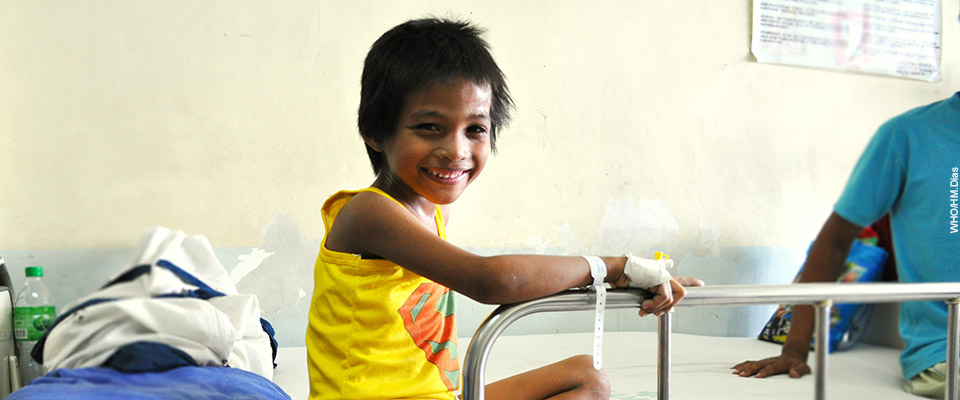- What We Do
- Agriculture and Food Security
- Democracy, Human Rights and Governance
- Economic Growth and Trade
- Education
- Ending Extreme Poverty
- Environment and Global Climate Change
- Gender Equality and Women's Empowerment
- Global Health
- Water and Sanitation
- Working in Crises and Conflict
- U.S. Global Development Lab

March 2014

Despite being curable, tuberculosis (TB) remains an enormous global public health issue. Of the nine million people a year who get sick with TB, a third of them are “missed” by public health systems. The majority of these 3 million are the most poor and vulnerable among our population.
USAID is working to control and prevent TB globally by scaling up effective interventions for prevention, diagnosis, treatment, and care so that progress continues and millions of lives are saved.
New Video
We CAN have a world with zero TB deaths. Watch the animated video on TB and don’t forget to share and spread the word!
TB Day Resources
Spotlight Event
Honoring Champions in the Global Fight against Tuberculosis - Tuesday, March 25, 2014
In recognition of World TB Day 2014, please join Dr. Ariel Pablos-Méndez, USAID’s Assistant Administrator for Global Health, in honoring champions dedicated to creating a TB-free world.
- Learn more about the event.
- Register to watch the LiveStream of the event on Tuesday, March 25, 2014 from 6:00 pm - 8:00 pm.
Join the Conversation
Follow the World TB Day social media campaign and share the message with friends and family.
- Follow @USAIDGH and retweet the message! Don’t forget to use the #WorldTBday hashtag.
- Tomorrow from 6:00 pm – 8:00 pm @USAIDGH will be live-tweeting at the Honoring Champions in the Global Fight against TB event. Use #TBChampion and #WorldTBDay to follow the conversation.
Tuberculosis in Prisons: A Growing Public Health Challenge
Over the last century, global control efforts have reduced the incidence of TB. However, TB in prisons remains a growing problem.
Working in close collaboration with national and international partners and stakeholders, USAID addresses the growing public health problem of TB in correctional settings by developing policy guidelines and recommendations, screening inmates, strengthening health services in prisons, improving infection control measures, and training staff.
- Download the TB brochure [PDF, 4.2MB].
Newsletter Archive
Breastfeeding and Nutrition
August 2017
Global Health Financing
July 2017
Maternal and Child Survival
June 2017
Human-centered Design. What is it?
May 2017
Focus on Infectious Diseases: 2017
April 2017
Global Health Highlights: 2016
December 2016
A Year in Review: 2015
January 2016
World AIDS Day 2015 – Special Edition
December 2015
USAID's News Storytelling Hub - Extreme Possibilities
August 2015
A New Roadmap to Health and a TB Diagnostic Test Help Improve Health Outcomes
June 2015
World AIDS Day 2014 – Special Edition
December 2014
Fighting Ebola – Special Edition
October 2014
Maternal and Child Survival – Special Edition
October 2014
World Contraception Day 2014 – Special Edition
September 2014
AIDS 2014 E-News – Special Edition
July 2014
World TB Day 2014 Special Edition
March 2014
AIDS 2014 E-News – Special Edition
December 2013
World AIDS Day 2013 – Special Edition
December 2013
Family Planning Updates
November 2013
Tuberculosis Special Edition
November 2012
STAY CONNECTED
Subscribe to the Global Health E-Newsletter and updates by entering your e-mail address below. Take a look at some of our past issues.
Follow USAID Global Health on Social Media:









Comment
Make a general inquiry or suggest an improvement.